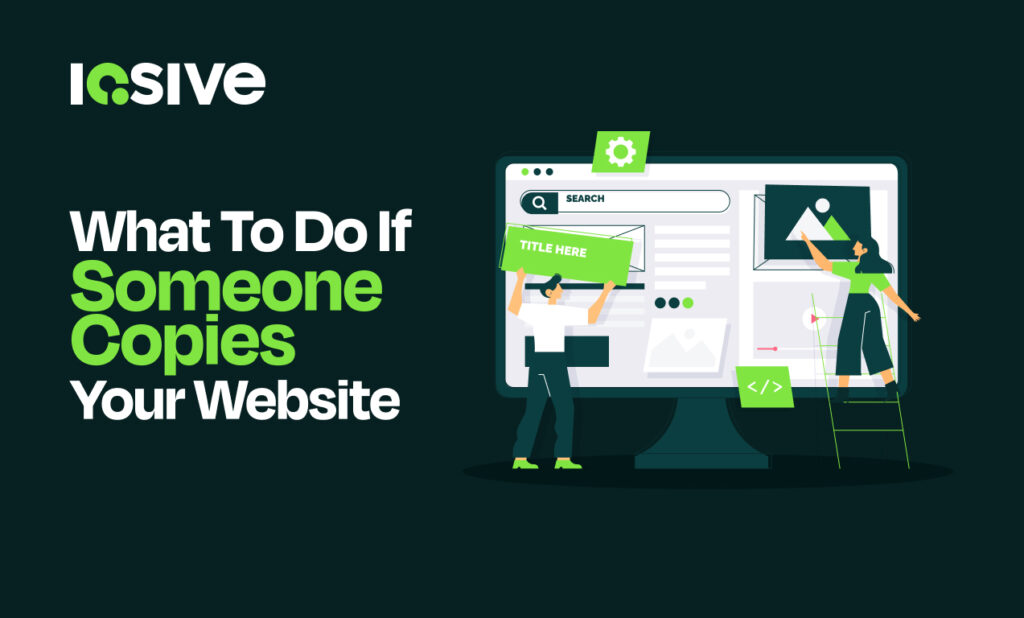Your website is the result of hours, sometimes years, of hard work, investment, and creativity. Whether it’s your blog posts, product descriptions, or entire site design, having someone copy your website without permission can feel both frustrating and unfair. Beyond the emotional impact, website copying can harm your SEO, confuse your audience, and even damage your reputation.
This guide will walk you through everything you need to know: how to recognize copied content, what steps to take legally and practically, and how to protect your website in the future.
Understanding Website Copying and Copyright Infringement
What Counts as Website Copying?
Website copying can take many forms. It could be someone lifting your blog posts word for word, replicating your product descriptions, stealing your custom graphics, or even cloning your entire site structure. Legally, any original content you create, including text, images, videos, code, or design elements, falls under copyright protection the moment it’s published. Copying without permission is considered infringement, regardless of whether the offender profits from it.
Common Signs Your Website Has Been Duplicated
Some red flags that your site may have been copied include:
- Entire paragraphs from your blog appearing on another website.
- Search results showing duplicate snippets of your content.
- New sites with strikingly similar layouts or images.
- Backlinks from unfamiliar domains using your exact wording.
If you notice sudden drops in SEO rankings, that may also be a sign of duplicate content issues caused by copycats.
Why Website Copying Is a Serious Problem
Legal and Ethical Implications
Copying a website isn’t a harmless act, it’s intellectual property theft. While some offenders may claim “fair use,” reproducing substantial portions of content or site design rarely qualifies. Ethical business practices demand originality, and copying damages both trust and credibility.
SEO and Ranking Consequences
Search engines like Google strive to deliver unique, high-quality results. If another site republishes your work, it can confuse algorithms about which version is original. In worst cases, your content could be outranked by the copied version, costing you visibility and traffic.
Impact on Brand Reputation and Trust
When duplicate content circulates online, users may struggle to identify the authentic source. This can undermine your authority, reduce brand recognition, and even cause potential customers to question your professionalism.
How to Confirm If Your Content Has Been Copied
Using Plagiarism Detection Tools
Tools like Copyscape, Grammarly Plagiarism Checker, or Siteliner can scan the web to identify duplicate text. For more advanced tracking, services like DMCA.com Protection monitor ongoing theft.
Checking for Duplicate Content in Search Results
A quick way to spot plagiarism is by copying a unique sentence from your content, placing it in quotation marks, and pasting it into Google search. If other sites show up with the exact wording, they’ve likely copied your work.
Monitoring Backlinks and Suspicious Domains
Tools like Ahrefs or SEMrush can reveal if suspicious sites are linking to yours. Sometimes, plagiarists copy content but forget to remove internal links, making it easier to spot them.
Steps to Take When Someone Copies Your Website
Gather Evidence of the Copied Content
Before confronting anyone, collect proof. Save copies of the infringing web pages, including timestamps. Evidence will be essential if you need to escalate legally.
Compare Original Publish Dates for Proof
You can use Wayback Machine (archive.org) or your site’s CMS logs to show when your content was originally published, proving ownership.
Take Screenshots and Document URLs
Screenshots and PDF saves of the offending site should include the URL and visible date. This strengthens your case if you file a DMCA complaint or consult a lawyer.
Reaching Out to the Offending Party
How to Send a Professional Cease and Desist Email
Often, the first step is contacting the offender directly. Draft a professional but firm message stating:
- The content they copied.
- Proof of your original authorship.
- A clear request for removal.
- A timeline (e.g., 72 hours).
Polite communication can resolve many cases quickly.
When to Negotiate vs. Escalate
If the site owner is cooperative, they may remove the content immediately. However, if they ignore you or refuse, the next step is formal action through a DMCA notice or legal channels.
Filing a DMCA Complaint
Submitting a DMCA Takedown to Hosting Providers
Most hosting providers honor DMCA requests. Identify the host (using a tool like WhoIsHostingThis) and send a takedown request with evidence.
Filing a DMCA Request with Google
If the infringing site doesn’t comply, you can ask Google to remove the copied content from search results via their Legal Removal Requests tool. This won’t erase the content but will reduce its visibility.
Handling Repeat Infringers
For serial offenders, you may need to file repeated takedowns or escalate to legal proceedings. Keeping thorough documentation is key.
Legal Options and Professional Help
When to Consult an Intellectual Property Lawyer
If the copied content involves high-value assets such as proprietary tools, designs, or product copy, consulting a lawyer specializing in intellectual property is worthwhile. They can guide you through cease and desist letters, lawsuits, and settlements.
Cost vs. Benefit of Legal Action
Litigation can be costly and time-consuming. For small infringements, DMCA action may be sufficient. However, if the theft damages your revenue or reputation significantly, legal pursuit could be justified.
Preventing Future Website Copying
Copyright Notices and Legal Disclaimers
Add a copyright notice to your footer and terms of service. While not foolproof, it makes your ownership explicit and discourages casual theft.
Using Tools to Monitor for Content Theft
Set up Google Alerts for unique phrases from your site. Monitoring services like Copysentry can notify you when your content appears elsewhere.
Strengthening Your Brand Authority to Outrank Copycats
Google often favors authoritative, trusted brands. By building backlinks, publishing consistently, and reinforcing your expertise, you’ll ensure that your version of the content is recognized as the original.
Final Thoughts on Protecting Your Website
Having your website copied is more than an annoyance, it can damage your business, SEO, and credibility. The good news is you have tools, legal protections, and preventive strategies available. By taking swift, professional action and strengthening your brand authority, you can minimize harm and safeguard your hard work for the future.
FAQs:
Q1: How can I tell if someone has copied my website content?
You can use plagiarism detection tools, run searches with unique text snippets, or track backlinks from suspicious sites.
Q2: What should I include in a DMCA takedown notice?
A DMCA notice should include your contact info, identification of the copied content, proof of original authorship, and a formal request for removal.
Q3: Can duplicate content hurt my SEO rankings?
Yes, Search engines may struggle to identify the original source, potentially lowering your visibility if the duplicate ranks higher.
Q4: Is copying a website illegal or just unethical?
Both, Copying website content or design without permission is copyright infringement, which is illegal and also unethical.
Q5: How do I report a stolen website to Google?
You can use Google’s Legal Removal Requests form to request that plagiarized content be de-indexed from search results.
Q6: What legal action can I take if my website is copied?
Options include sending cease-and-desist letters, filing DMCA notices, or pursuing lawsuits with the help of an intellectual property lawyer.
Q7: How do I protect my website from being plagiarized in the future?
Use copyright notices, monitoring tools, and Google Alerts, and strengthen your site authority to reduce the impact of plagiarism.
Q8: Can website design be copyrighted or only the content?
Yes, unique website designs can be protected under copyright law, along with text, images, videos, and code.









